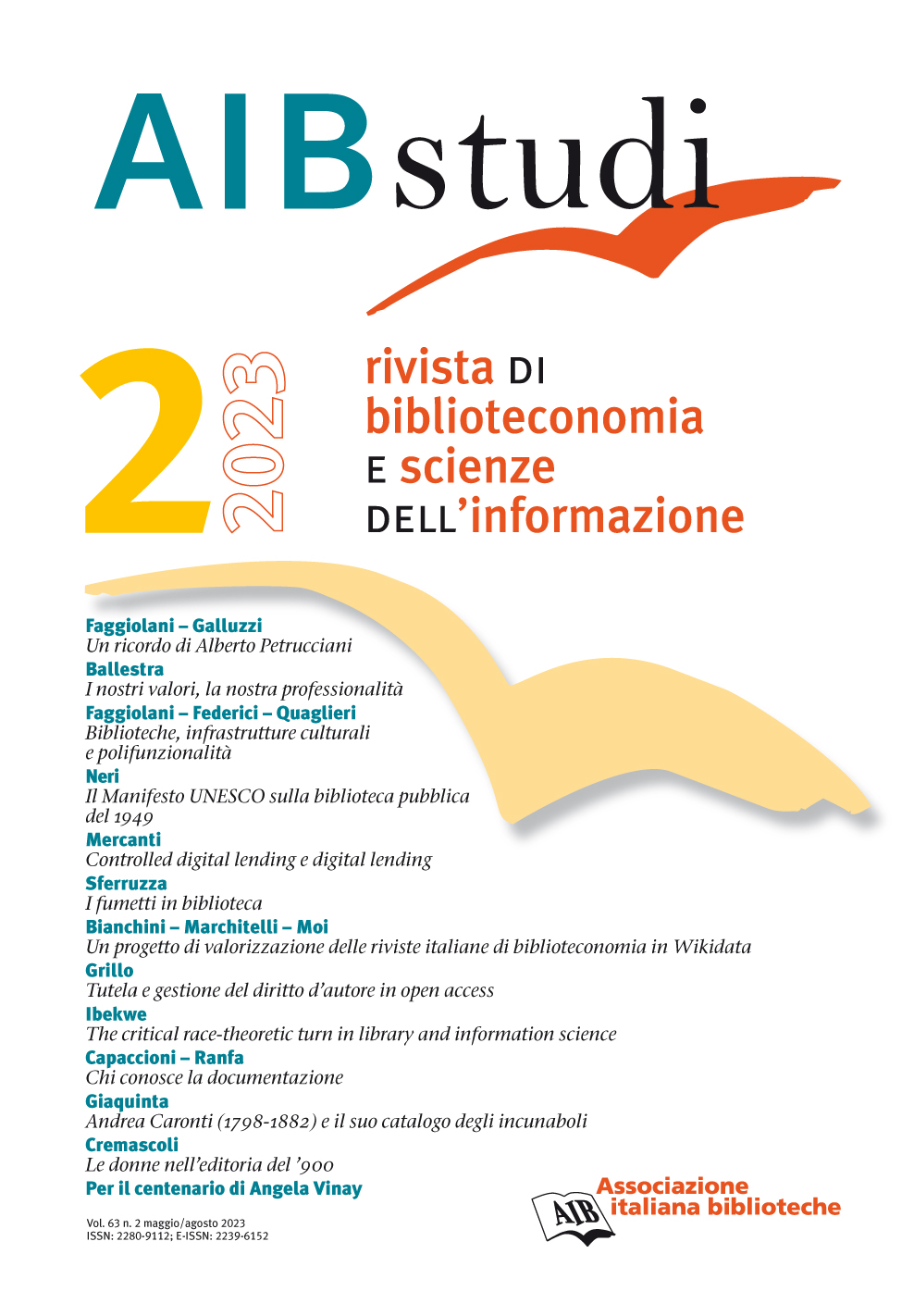Controlled digital lending and digital lending: a comparison on digital reading through libraries
DOI:
https://doi.org/10.2426/aibstudi-13903Keywords:
controlled digital lending, digital lending, copyright lawAbstract
Controlled digital lending is a model for book digitization and lending implemented by libraries. It was developed in the United States. It is based on the first-sale doctrine and on fair use and it was implemented on a large scale by the Open Library of Internet Archive. Despite this, it is not envisaged by US copyright law.
Publishers’ and authors’ associations have criticised controlled digital lending and the Open Library, and in 2020 some publishers sued Internet Archive (Hachette v. Internet Archive).
The publishers, Internet Archive, the Court in charge of deciding on the case and the theorists of controlled digital lending themselves have often discussed the relationship between controlled digital lending and digital lending (or e-lending).
This article proposes a comparison between controlled digital lending and digital lending with the aim of highlighting the substantial differences. It also analyzes the 2021 IFLA Statement on controlled digital lending to understand IFLA position on the matter. At the same time, references are made to the court case Hachette v. Internet Archive, as a case to understand the relationship between controlled digital lending and digital lending and some of the arguments among the stakeholders of the book and reading system.
Downloads
Downloads
Published
How to Cite
Issue
Section
License
Copyright (c) 2023 Fabio Mercanti

This work is licensed under a Creative Commons Attribution-ShareAlike 4.0 International License.









